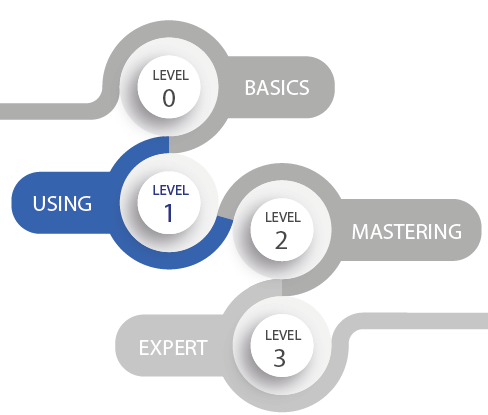USING DATEX II¶

After learning the basics and determining your needs for the DATEX II model, the next step is using DATEX II. DATEX II is a set of coherent information models for all kinds of information exchanged in the traffic and travel domain. In practice you don’t need the entire model all the time. To manage this focus and in order to ensure the standardisation of subdomains, the concept of profiling is developed. In level 1 you can determine which recommended service profiles or recommended reference profiles you need for using DATEX II, and how you can use the profiles in operation. This level also includes an introduction into Exchange, where we go into detail on how DATEX II data is exchanged and what aspects where taken into consideration with setting up the exchange between actors.
With knowledge of this level at your disposal you can take the first steps in setting up the DATEX II model and deploying it for your organisation.
This level contains the following parts:
Getting started with DATEX II¶
1 Start with defining your information service in functional terms:
With who are you going to Exchange?
What road network?
What information?
Do you really collect the information?
Is there a digitalised road network available (sustainable)?
Agree on the language
Agree on the information profile + maintenance
2 The next step is to determine the operational level of service:
Operations supported
Timeliness requirements
Strong coupled or loose
3 Then, determine the location referencing method to be used.
TMC, linear, Open-LR, TPEG, GML or a combination
4 And finally, go to webtool.datex2.eu and choose a predefined profile or create one yourself using the tools available to generate and validate your own profiles.
Applying DATEX II in your operational context¶
An introduction to DATEX II technology¶
Deployment of DATEX II in your data Provision¶
Using profiles to your benefit¶
The rapid evolution of the digital world means that European standardisation and harmonisation of data plays an increasingly important role in achieving (national and European) policy goals. This is partly reflected by the inclusion of DATEX II as a standard in European ITS regulations. In a number of ‘delegated regulations’ to the European Commission’s ITS Directive (delegated acts), DATEX II is mentioned as a (reference) standard in which the exchange of data must take place. That means that DATEX II is used in practice. This concerns the delegated acts on Multimodal travel information services, Real Time Traffic Information Services (RTTI), Safety Related Traffic Information Services (SRTI) and Truck Parking. DATEX II has developed European profiles for these four delegated regulations which are available on our website and the documentation portal.
For more information about profiling, take a look at the Profiling Guide